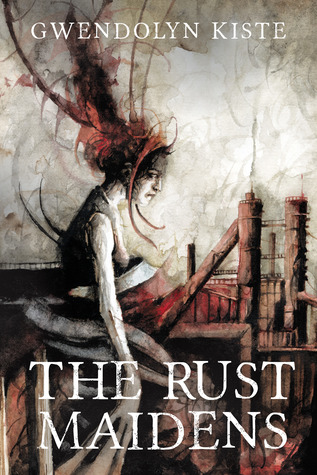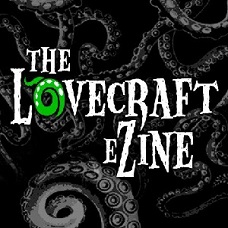 Back in October, which feels like a million years ago, I did a short review of Gwendolyn Kiste’s And Her Smile Will Untether the Universe. I loved it, and I couldn’t wait to find some time to read Kiste’s novel, The Rust Maidens. This past February, which also feels like a million years ago now that Spring is arriving, I finally got to devour it.
Back in October, which feels like a million years ago, I did a short review of Gwendolyn Kiste’s And Her Smile Will Untether the Universe. I loved it, and I couldn’t wait to find some time to read Kiste’s novel, The Rust Maidens. This past February, which also feels like a million years ago now that Spring is arriving, I finally got to devour it.
In summary, I adored many of the same things in Kiste’s novel that I did in her short fiction. There is a lyrical quality to her prose, and her narrative is filled with metaphors and subtexts for readers to digest. While I haven’t read a vast amount of Shirley Jackson, I have read enough to see parallels to Kiste’s work. So, if you are someone who enjoys Jackson, I think you’ll find The Rust Maidens to your taste.
Reading novels now that I have a graduate degree in writing, I often find myself looking at the structure of books. In The Rust Maidens, the story is told from a single protagonist, Phoebe, but Kiste foregoes a simple linear narrative in favor of one split over two different years, 2008 and 1980. The novel opens with a world-weary Phoebe returning to her hometown of Cleveland in 2008. Since the older Phoebe has already experienced the climax of the story, Kiste can build mysteries to intrigue the reader by teasing revelations to come with the inner monologue of the protagonist. At the end of the first chapter, Kiste leaves readers pondering the two primary questions at the heart of the novel. Who are the Rust Maidens, and what happened to them? These are the questions that will propel readers through the book, but in case that’s not enough to keep you reading, there is a healthy dose of juicy cliffhangers. These are effective in novels because you can always choose to flip to the next page, whereas in television, especially classic network fair, you’re stuck waiting for a period you have no control over.
While I won’t get into deep spoilers, as I feel the secrets of books are for readers to discover and not for reviewers to impart, I do have a few additional thoughts on this novel. I loved the fact that the older Phoebe’s story takes place in 2008, the year of the great recession, which perfectly parallels the economically challenged Cleveland presented in 1980. Kiste’s descriptions of both the settings and the Rust Maidens themselves leave you feeling like you’re covered in grime, in the best kind of way. While the community in which Phoebe grew up in 1980 has significant issues, I loved a moment near the novel’s climax where the reader gets to see that not everyone within that community is as heartless as they seem for a large portion of the tale. There is a tremendous grey quality to the morality of the characters at the heart of this story, and I live for that kind of complexity.
If you’re hesitant to jump into a novel by Kiste because you haven’t read her work yet, I’d advise you to check out her short story, The Eight People Who Murdered Me (Excerpt from Lucy Westenra’s Diary). It’s a fun addition to the mythology of Bram Stoker’s Dracula, it’s got a lot of thought-provoking subtexts, and it’s nominated for a Stoker Award. If you’re already familiar with the works of Gwendolyn Kiste, there’s a world of other great horror writers to explore, a few of which I discuss in my Women in Horror Month article.









